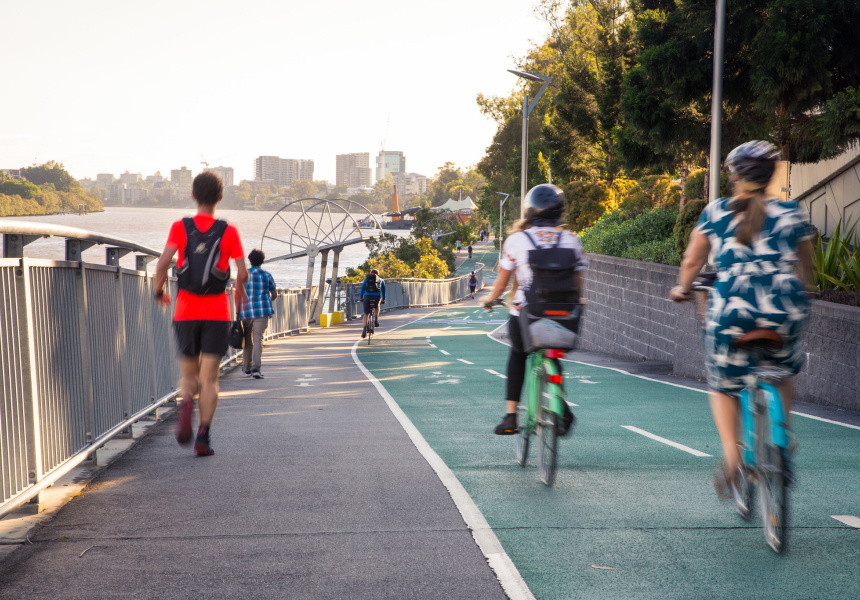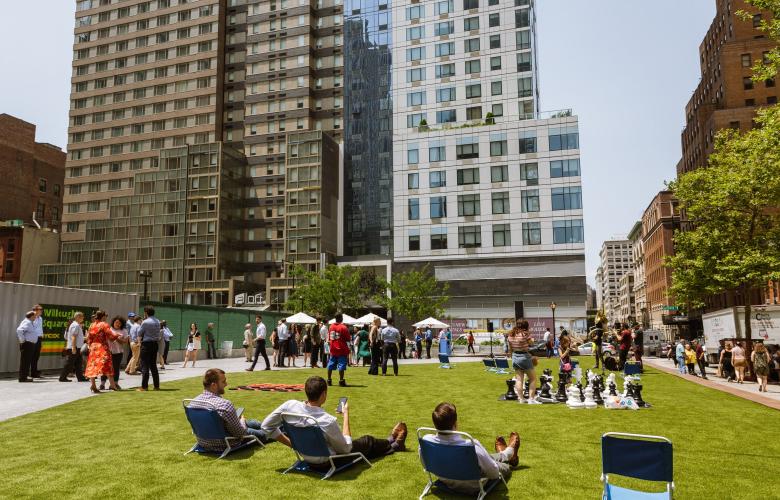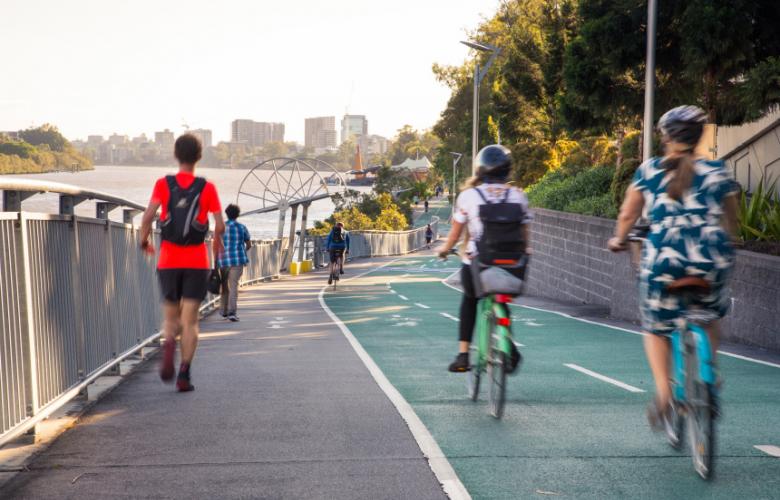Award-winning urban planner says we need to rebadge CBDs as ‘mixed-use urban centres
Contact
Award-winning urban planner says we need to rebadge CBDs as ‘mixed-use urban centres
Award-winning urban planner Mike Day Hatch RobertsDay says we need to rebadge CBDs as ‘mixed-use urban centres’ – and offers 6 solutions for councils to attract people back.
Award-winning urban planner Hatch RobertsDay says we need to rebadge CBDs as ‘mixed-use urban centres’ – and offers 6 solutions for councils to attract people back.
While recent easing of restrictions on transport and in workplaces have seen a proportion of workers return to our urban centres, an urban planner says that the new hybrid working model is likely to keep central city traffic lower than at pre-pandemic levels. As workplaces continue to be dispersed and CBDs become more than just a place for work, he says we should shift to the term ‘urban centres’ instead. Further, he says councils should begin planning other approaches to bring life back into these areas, and offers six workable ideas.
Mike Day is a partner at award-winning Australian urban planning and design practice Hatch RobertsDay (robertsday.com.au). He says: “Not all central city workers will return five days a week. Attracting people into our cities will require planners and councils to reconceptualise the purpose and function of urban centres. Consider many of our inner-city urban neighbourhoods: they are thriving because they are a good mix of residential dwellings, small-business workplaces, entertainment and food venues. It’s prudent for planners to bring these elements into our centralities to ensure they are inviting settings for people to work, live and play, with meaningful social interaction.
“Our CBDs have become so much more than just a central place for work. With the emergence of dispersed and hybrid workplaces during and post COVID-19, it is inevitable that we will need to conceive of our city centres as vibrant multi-use destinations. Places for living, learning, recreation, gathering and working will all need to co-exist in central cities. The term CBD, therefore, needs to be replaced with a more apt description of these vital urban centres. We should be emulating the nomenclature adopted by leading global cities, such as ‘downtown’ and ‘urban centres’ – fostering a complete mix of uses enticing a much broader spectrum of users.”
Mike’s comments come after the latest city office occupancy figures reveal 63 per cent occupancy in Brisbane, 50 per cent in Sydney, and 35 per cent in Melbourne.[1]There might be a low appetite among employees to discard home-based work completely: a survey late last year revealed 58 per cent of workers expect to work from home eight or more days each month.[2]
Mike says: “Employers of small-to-medium businesses tend to ensure they live close to work, but employees don’t necessarily have that luxury and many would rather avoid the commute. Our focus should be on injecting more energy and vibrancy into urban centres so that people will enjoy travelling into them, and other groups would have a reason to visit and enjoy the area outside of work.
“Our central cities already have elements of good neighbourhood design: they have extensive transit networks and are compact, mixed-use and walkable. However, we must get the balance of the neighbourhood feel right. By understanding what people cherished during the pandemic when they remained in their local urban neighbourhoods is a good starting point.”
Mike reveals six solutions councils and developers could adopt to attract foot traffic and vibrancy back into our central cities and neighbourhoods, and ultimately, improve our quality of life:
1. Turn temporary vacant lots into green spaces. Natural, green surroundings improve our mental and physical health. Despite our urban centres lacking vacant spaces for permanent parks, there is an opportunity for urban developers to temporarily activate sites awaiting redevelopment into green spaces such as pocket parks.
2. More local councils could fast-track processes for outdoor dining approvals. Mike says outdoor dining will give hospitality, entertainment, arts, cultural businesses and their surrounding areas more character and will create ‘eat streets’ that will attract patrons. However, businesses have faced challenges in taking up this vibrant dining option due to lengthy council approval processes. More States could follow the NSW Government’s lead which, with the City of Sydney, is trialling a faster approval process for outdoor dining applications. The Victorian Government and City of Melbourne are also fast-tracking permits for businesses wanting to extend their trading and expand onto footpaths and on-street car parking.
3. Incorporate separate and wider walking and cycling pathways through the city. Social restrictions on public transport motivated people to walk and cycle in their local neighbourhoods. Mike says city councils could widen and multiply walking and cycling pathways with aesthetic streetscapes to make commutes safer and more enjoyable. These would attract more visitors to experience city parklands and CBDs differently. Mike says Australia could follow London’s plan to extend footpaths, restrict driving on shopping streets, and add more cycle lanes, and look to Paris’ development of 650km cycleways.
4. Increase residential dwellings in our urban centres. Mike says there is an opportunity to increase accommodation in our CBDs by repurposing some vacant office spaces into apartments and hotels. “The more people living in our CBDs, the better. We should be capitalising on their strong existing transit network and walkability to minimise the proportion of workers commuting. For too long, we have separated city uses.” Mike says councils and planners could be more flexible with mixing of uses to increase the proportion of combined residential and commercial buildings, and may need to reinvent their planning laws for creative outcomes.
5. Temporarily close roads to activate public spaces. With most workers splitting their working hours between office and home, employees need an incentive to commute into the CBD. Mike suggests councils temporarily close semi-busy roads – such as Flinders St in Melbourne – to regularly hold pop-up street events such as street food markets. This could also lead to more business for hospitality venues after work. If regular events are held in the city, workers can plan for, and look forward to, going into CBDs.
6. Engage the community to understand their needs and preferences. Mike and his team are ardent advocates in community engagement to capture feedback on project ideas. He suggests councils engage with business owners and CBD employees to understand how they want our city centres to change and what they want to see. Getting ongoing community input throughout the process can lead to more successful and accepted projects.

Image 1: Willoughby Square Park, New York, Photography: Images courtesy of NYC EDC. Image 2: Cycling and Walking path V2 (Brisbane_Photography: Image courtesy of Flickr / Brisbane City Council











